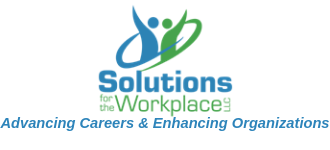LinkedIn is used more in the private sector but there are many federal agencies (the US Department of the Army is the largest LinkedIn user in the world) that won’t interview you for a job if they can’t find you on LinkedIn. Instant pass.
I often encounter federal employees that still haven’t heard of LinkedIn or who don’t have profiles; so whether you’re actively looking for a job or not, there is no excuse for not getting started.
Here are 7 quick things you can do to get going:
Create a profile and customize your LinkedIn URL. Here’s how: https://www.linkedin.com/help/linkedin/answer/87?lang=en. Having a custom URL is a great differentiator.
Include a photo. People want to know what you look like. Please make your photo professional. Your photo should show your face (rather than your whole body). No extra arms hanging over your shoulder or beer cans in your hand. And if you are transitioning from the military, your photo should be a civilian one—don’t forget to smile; you want to look approachable and friendly.
Put together a strong Headline. This is the line under your name. LinkedIn will provide a default headline (your job title) but this can (and should) be edited to be more representative of who you are. You can make this your branding statement or use it to target jobs you’re interested in. You can even separate thoughts or concepts by using symbols such as: ► or * or │ or ▪. Be sure to use symbols that are common across Word. You are allotted 120 characters for your LinkedIn Headline. Here’s my LinkedIn Headline as an example: Federal Human Resources Training & Job Search Expert. Here’s another: Program/Project Management ► Business Development ► Operations ► Aviation /Air Advisor ► Pilot ► Trainer.
Create a strong summary. You have 2000 characters to create a strong statement about who you are. Don’t just copy and paste your Skills Summary from your resume. Show some personality but be sure to include your qualifications and experience so that your profile will “pop up” in the algorithms. If you are transitioning military, be sure to translate your military experience into “civilian-speak”.
Populate the Experience section. Include your jobs from the last 10 or so years (going back 30 years not required or recommended). Again, this should not be a copy and paste of your resume. Show quantifiable results and use the key words from the industry you are targeting. And military transitioners: don’t forget to translate!!
Include skills on your LinkedIn; again, this is a great way to be seen in the algorithms. Only include skills that are associated with your target position(s). And make sure to capture them all. If you’re not sure what skills are appropriate, take a look your ideal job postings and identify the common words across them. Wordle may help: www.wordle.net.
Create connections. Reach out to people you know to up your connections. Show you’re an active user. And, when you connect with people, send them a personalized (not the default) connection request. Aim for 300+ connections.
We can fight the growth of social media, or we can use it to our advantage. LinkedIn a targeted toward professionals who want to find a way to stay in touch and keep up with colleagues and trends in their industry. Why wouldn’t you take advantage of this free, powerful tool?
